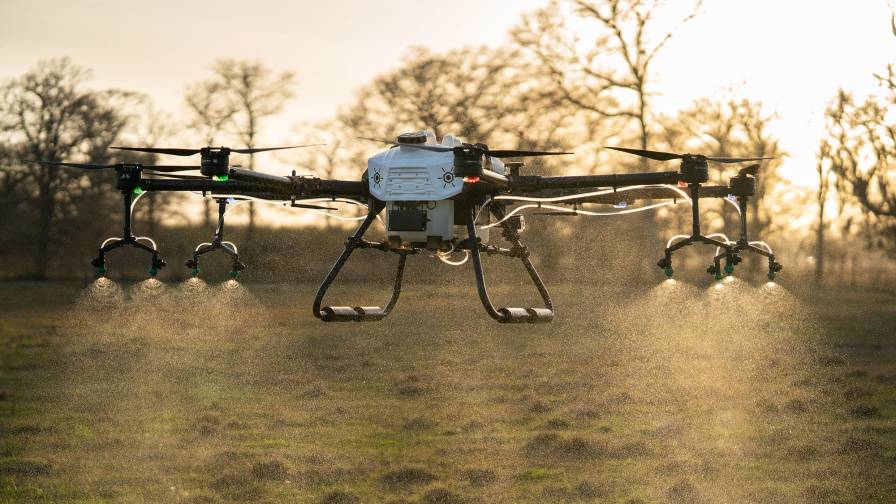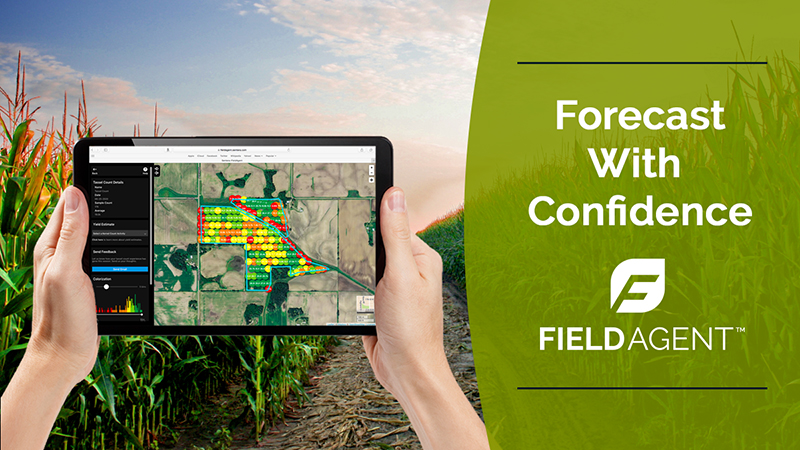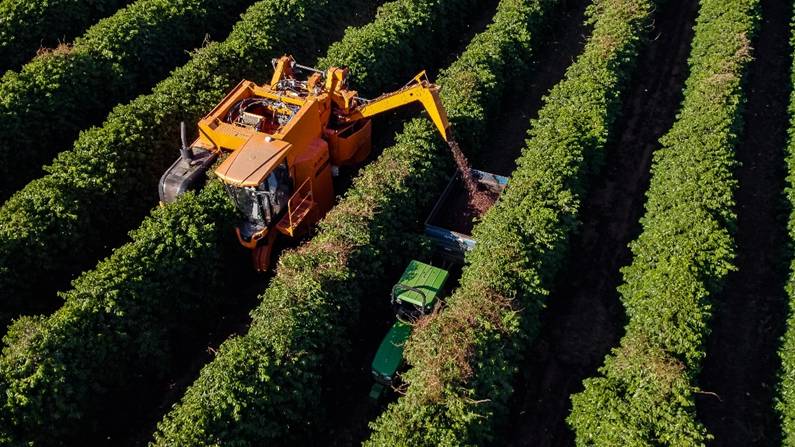Balancing Purpose and Profit: Granite Creek’s Jim Clark on ESG, AgTech, and the Future of Agribusiness Investment
As sustainability, precision agriculture, and ESG principles reshape the agribusiness landscape, stakeholders across the value chain are grappling with how to adapt — and invest — wisely. From evaluating the true ROI of sustainability, to overcoming barriers in ag tech adoption, Jim Clark, Managing Partner at Granite Creek Capital Partners, offers a candid perspective on where the industry is headed.
ABG: Sustainability is a key focus in agribusiness, but measuring its impact can be challenging. What specific metrics or criteria should companies use to evaluate their sustainability practices before seeking investment? And could you share an example of how ESG factors have influenced investment trends in the industry recently?
Jim Clark: Granite Creek has two strategies in agribusiness. We invest in operating companies, essentially private equity, and we also manage a fund dedicated to row crop farmland. We currently own around 8,000 acres in the Upper Midwest, primarily growing corn and soybeans.
On the private equity side — the commercial business side — ESG hasn’t been a top priority to date. We are mindful of it, but it’s not a core part of our investment criteria. That said, many of the businesses we pursue or have invested in do promote farm-level efficiency. They support better resource management, yield enhancement, and waste reduction. While these aren’t strictly ESG metrics, they are adjacent and complementary to ESG practices.
MORE BY LAUREN MILLIGAN
Ag Tech Talk Podcast: Tria Americas’ Jim Beneke Discusses Adaptive Artificial Intelligence in Formulation
Ag Tech Talk Podcast: How AI and Geospatial Tech Are Transforming Carbon Measurement and Supply Chains
Ag Tech Talk Podcast: Adoption Trends for Precision Ag, Farm Management Platforms, and Drones
However, most of the focus on these target business attributes come from the perspective of helping farmers improve their bottom line. If the related ESG benefits arise as a byproduct of these products or services, that’s a bonus.
On the farmland investment side — under our investment entity called Moraine Farmland Partners — we do have more explicit ESG benefits. These primarily take the form of alternative energy integrations. Currently, about 40% of our holdings include either wind or solar energy components, with solar being more prominent.
Additionally, we make efforts to follow USDA protocols regarding conservation. Certain areas of our land are left fallow to support native species — like butterflies and bees — and the USDA offers incentive programs to maintain those natural habitats as they align with improved pollination and soil conservation.
ABG: With the rapid growth of ag tech innovations, which specific technologies do you believe are poised to have the most significant impact on agriculture in 2025?
JC: From what we’ve seen, there’s been a noticeable uptick in innovation around livestock technology, particularly in wearables. These can include ear tags, collars, or other devices equipped with biometric monitoring capabilities to track the health and activity of animals across various farm settings.
Looking ahead, we expect further integration of these wearables with farm management systems, including direct tie-ins with local on-farm gateways. For these technologies to be truly effective, farmers, service providers, and hardware developers must prioritize which data to collect, when and where to capture it, and how best to process and present it.
Ultimately, the goal is to synthesize that data into actionable insights that help farm owners, managers, and advisors make informed decisions. While the ecosystem is improving, delivering data to customers in a relevant, usable format is still very much a work in progress. It’s evolving, but we’re seeing positive momentum.
ABG: With vertical integration gaining momentum across the ag supply chain, how do you see this trend reshaping the industry? And what factors should companies consider when evaluating whether to integrate more aspects of their operations?
JC: This is a subject matter where our perspective may be somewhat limited, given the nature of our investments. On the private equity side, Granite Creek primarily invests in smaller businesses, typically those with revenues between $25 million and $100 million.
At that size and scale, the opportunity to pursue vertical integration is more constrained. The companies we invest in often lack the size and resources needed to take on multiple segments of the supply chain effectively.
We tend to see vertical integration play out more among larger players in the market with the scale and infrastructure to manage multiple stages of production, processing, or distribution. Given where we focus our investment efforts, most of our portfolio companies aren’t currently positioned to pursue vertical integration in a meaningful way.
ABG: Agribusinesses often struggle to balance the long-term returns from sustainable practices with the need to demonstrate short-term financial performance. How do you see companies managing this tension?
JC: We would agree that sustainability, while a growing priority, is generally viewed as a longer-term aspiration. The financial return from sustainability investments is often indirect and harder to measure, especially on a farmer’s profit and loss statement.
And that creates some skepticism among farmers. If the benefits aren’t clearly visible or measurable, people start asking, “What am I really getting out of this?”
This tension has been exacerbated by declining farm margins in recent years. With profits tightening, any strategic initiative — sustainability-related or not — needs to show a clear, near-term return on investment to get serious consideration from farmers, ranchers and other agribusinesses in the value chain.
That said, there are sustainability practices that can drive efficiency, reduce waste, improve product quality, or even command a premium price from downstream partners. When those benefits are clear and quantifiable, such initiatives can and will be prioritized in the short term.
However, in many cases, the market or downstream partners have not yet recognized or shown a willingness to pay for those added sustainability benefits. As a result, these initiatives often get pushed down the priority list and deferred to a future time when the economic incentive is stronger.
ABG: How should companies approach risk management in terms of environmental and social governance? What key considerations should agribusinesses keep in mind when integrating ESG into their corporate strategies?
JC: One of the challenges with ESG in agribusiness is that environmental and social governance concerns are often locally driven. A business operation in one geography or state may face very different issues than an operation in another, so risk management must be tailored to local realities. When we look at our portfolio companies, we focus on how management and ownership understand their impact on their immediate environment and community — both where products are manufactured and where they’re ultimately used in the field.
We actively encourage our companies to make proactive investments in areas like process controls, standard operating procedures, enhanced quality management systems, and information systems. Responsible byproduct and waste management is also a key focus. These are all topics we discuss regularly at the management and board levels.
We’ve seen — both in our own companies and across the broader market — that if there’s a breakdown or mismanagement in any of these areas, the consequences can be serious. You can lose a customer’s trust, and that affects not only short-term sales and profits but also long-term business prospects. Rebuilding that trust can take a very long time.
So, there’s a strong incentive to get these operational and process controls right. Beyond being a good corporate citizen and safeguarding your reputation, investments in ESG-related processes often have the added benefit of maintaining or improving financial performance. That makes it easier to justify and support them across the organization.
ABG: As precision agriculture and data analytics continue to grow, what do you see as the biggest barriers to adoption at the farm level? How can industry stakeholders, including investment firms, help accelerate the widespread use of these technologies?
JC: One of the biggest adoption challenges is the fragmentation of the agricultural market —despite consolidation trends, there are still many independent operators, making awareness and outreach difficult. Farming is generally a lower-margin business, so upfront and ongoing tech costs can be a barrier. Data privacy is another concern, as many farmers are uneasy about where their data goes and who can access it. The lack of standardization across farm management platforms also adds risk, as choosing the wrong system can be costly. Finally, the time and labor required to train staff and integrate new technology driven tools is a major hurdle for already stretched operations.
ABG: Given those challenges, how can stakeholders, like investment firms, government agencies, and private companies, help support broader adoption?
JC: First, we need to address infrastructure reliability. These systems rely heavily on fiber optics, broadband, and satellite coverage. If farms don’t have reliable internet, the effectiveness of these tools is immediately compromised.
Second, the ag tech industry must find ways to reduce the cost of use. Whether by driving down the price of adoption or subsidizing early implementation through government or private support, there needs to be a strategy to ease the added financial burden on farmers.
Next, we need to promote standardization and simplification. If there’s a clear, dominant platform—or if the tech becomes more user-friendly through open-source models or refined interfaces—then adoption will likely increase.
Finally, and perhaps most importantly, we need more proof of concept of these exciting technologies. Farmers want to know: Does it work? Will it pay for itself? That means investing in university and private research trials, establishing centers of excellence, and leveraging peer-to-peer marketing. Farmers trust their peers more than they trust a sales rep from an unfamiliar company. If early adopters can speak credibly about the value of these technologies, others will be far more likely to follow.
In any industry, but especially in agriculture, word of mouth from trusted peers carries more weight than company messaging. That trust is key to accelerating adoption.











